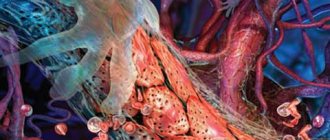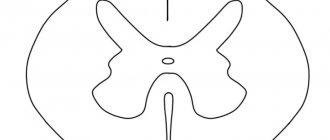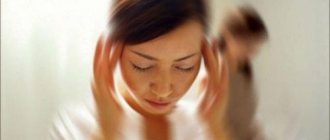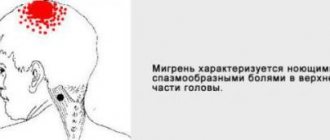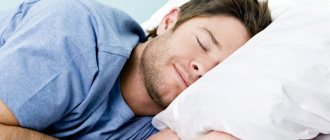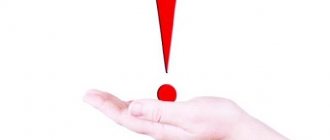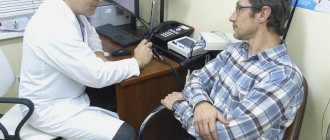Human gait is the result of the interaction of muscles, bones, vision and inner ear. The brain and central nervous system are responsible for coordinating movements. If the functioning of the central nervous system is disrupted (in certain parts), certain movement disorders may occur, including gait disturbances (abasia or dysbasia). Outwardly, this phenomenon may look like problems with normal joint flexion, sudden jerking movements when walking, a manege, shuffling gait, etc.
The following symptoms may be a reason to consult a doctor:
- difficulty turning or climbing stairs;
- gait disturbance is accompanied by numbness, pain, convulsive twitching, instability, muscle weakness or stiffness of muscles in the limbs;
- falling, stumbling, colliding with objects;
- severe physical exhaustion causing muscle weakness.
1.General information
Gait, plasticity and, in general, psychomotor skills are the most important components of a unique human individuality, which can tell a lot about the personality in general and about the emotional state in particular. We fly or wander, rush past or barely drag our feet; while others, you see, have their legs tangled because they drank the wrong drink and in the wrong quantities. However, for a neuropsychiatrist, gait is an informative and diagnostically significant indicator, which the specialist necessarily pays attention to (even at that short stage, while the patient walks from the office door to the chair).
As is known, all processes, acts, functions of the body are directly or indirectly controlled by the central nervous system, i.e. brain and spinal cord. Gait, of course, can be impaired due to uncomfortable shoes, an accidental stone, a bruise or an ingrown toenail, but identifying and eliminating such factors is much easier than diseases of the musculoskeletal system, and especially than disorders of psychomotor and psychokinetic functions, including gait , due to organic damage to the central nervous system. At the same time, certain gait disorders (dysbasia) are very widespread and correlate, among other factors, with age: dysbasia is observed in approximately 15-20% of older people. But not only them.
A must read! Help with treatment and hospitalization!
Balance and coordination problems
Impaired coordination of movement is called “ataxia” by the medical term. This condition is a sign of a process that was triggered by problems in the functioning and distribution of nerve impulses sent from the brain.
To carry out effective treatment, it is necessary to conduct a comprehensive diagnosis and eliminate the factors that initially influenced the process of human brain activity. Self-medication in such a situation is impossible and unacceptable. This is because serious consequences such as disability or death are possible.
The musculoskeletal system is subject to control by the nervous system. Neurons located in the spinal cord and brain are interconnected. Thanks to their coordinated work, a signal is transmitted to the main human organ. From there comes a response impulse that provokes action.
When neurons from different areas work correctly, the signal is clear and lightning fast. If there are problems in any part, the impulse is supplied slowly or is absent altogether. The disturbance is called loss of motor coordination.
Most often, the disease occurs in older people who have crossed the 60-year threshold, regardless of whether they are men or women. The reason for the occurrence, first of all, is the aging of the body and the inability to clearly and fully carry out assigned tasks. The disease can develop not only in adults, but also in children.
Species and types
There are static and dynamic violations. In the first case, problems with coordination arise only when the person is vertical, when the patient is standing. In the second situation, incoordination appears with any movement.
The following types of ataxia are diagnosed:
- Posterior columnar (sensitive) - develops with damage to the spinal and peripheral nerves, as well as the thalamus and posterior columns of the spinal cord. Movement is difficult; when walking, the patient does not feel a hard surface underneath him or his own actions. The cause is changes in the sensitivity of the muscular-articular system.
- Cerebellar - manifests itself due to damage to the cerebellar system. It is divided into 2 types: dynamic or static-locomotor. In the first type, the functioning of the cerebellar hemispheres is disrupted. The person makes frequent chaotic movements, there is uncoordination, trembling of the arms and legs, and a speech disorder is detected. The second type is characterized by damage to the cerebellar vermis. The patient has an unsteady gait, he staggers and spreads his legs when walking. In severe cases, the support of the head is disrupted and keeping it in one position becomes impossible.
- Vestibular – disorders occur in the vestibular apparatus. The head is constantly dizzy, the condition is accompanied by nausea and vomiting. When changing position or sudden movement, the symptoms worsen.
- Cortical - the problem occurs in the cortex in the frontal lobe in the anterior regions. Impulses from this part are directed to the cerebellum. There is a change in gait, unsteadiness and uncertainty when walking. The human body deviates in different directions, the feet are aligned in one straight line, and legs become entangled.
To correctly diagnose the type of disease, the factors of its occurrence are first identified. Based on these data, the patient is prescribed therapy. To eliminate the problem, you need to know exactly the causes of poor coordination when walking.
Causes of the disease
The movement problem is dangerous and serious for a patient with disabilities. Being in this state, a person is unable to coordinate his own actions.
The development of the disease is influenced by many factors. The following reasons are identified:
- Traumatic brain injury
- Brain neoplasms
- Parkinson's disease
- Encephalopathy
- Dorsopathies
- Stroke
- Cerebral palsy
- Intoxication due to improper use of medications
- Gas poisoning
- Autoimmune diseases
- Sclerotic changes in old age
- Infectious diseases: meningitis, encephalitis
- Taking drugs
- Catalepsy is muscle relaxation due to a surge of emotions.
It is not difficult to identify the disease; the symptoms are visible to the naked eye. But to know exactly what they are, you need to familiarize yourself with the clinical picture.
Symptoms of manifestation
People with a developing disease move poorly, are unsure, lack balance, appear distracted, and have impaired articulation. When trying to draw a figure, for example, a circle, in the air, the patient ends up with a zigzag or broken line.
One method of testing coordination is a test where the patient is asked to touch his nose. If the disease develops, a person cannot perform the assigned task normally. The patient gets it either in the mouth or in the eye. Negative changes are also visible in the handwriting: the letters are written unevenly, creep on top of each other, and jump along the line. These signs indicate neurological problems.
When coordination is impaired, the following symptoms appear:
- The pupil perceives the present as an illusion, objects are constantly in motion or rotation;
- The gait changes, there are frequent falls;
- High blood pressure is recorded, hypertension is detected;
- The patient becomes lethargic, drowsiness appears or sleep is disturbed;
- There is a malfunction in the functioning of the hearing organs: sometimes noises are heard, sometimes sudden silence;
- There is tremor of the limbs;
- There is a loss of clarity and coherence of movements;
- There are headaches for no apparent reason and severe dizziness;
- Irregular breathing, shortness of breath, increased sweating;
- Psychoneurological disorders occur - delusions, hallucinations.
Regardless of what symptom is present, you should immediately consult a doctor. The doctor assesses the patient’s condition and accurately establishes a diagnosis, on the basis of which a therapeutic intervention is prescribed. Early detection of disturbances in motor coordination leads to a reduction in symptoms and short-term therapy.
Treatment of ataxia
To accurately identify the disease that the patient suffers from, the doctor records complaints, conducts an external examination and tests. To make an accurate diagnosis, it is necessary to undergo a certain examination:
- Biochemical blood test in expanded form;
- Magnetic resonance and computed tomography;
- General urine and blood tests;
- Ultrasound examination of internal organs.
Depending on the patient’s complaints, the diagnosis is adjusted, and the range of necessary tests is expanded. Based on the results obtained, the doctor tells you how and why you need treatment.
To treat impaired motor coordination, an integrated approach is used, which includes drug therapy, as well as, if contraindications are excluded, rehabilitation. The following medications are used for therapy:
- Nootropics and angioprotectors;
- Vitamins B, A, C, B12;
- Antibiotics to treat existing infection in the brain or middle ear;
- Medicines that activate cellular metabolism.
All medications are prescribed by the doctor for the patient on an individual basis.
A number of exercises have been developed to restore balance, as well as to prevent their occurrence:
- When traveling on public transport, it is better not to sit down, but to remain standing. The legs are spread shoulder-width apart, you need to refrain from supporting. Try to coordinate your movements while balancing on weight;
- Place your feet together, spread your arms in different directions, close your eyes. You need to hold this position for 20 seconds. Then lower your hands and repeat the procedure again;
- It is required to take long walks every day, taking walks. You need to walk along a narrow curb without the help of others. This exercise can be done at home. To do this, you need to draw a line or lay out a board and try to walk smoothly along the marked surface;
- Exercise with stairs. You have to climb up and down the rungs several times throughout the day.
- Both feet are placed on the same line, so that the toe rests on the heel of the other. Hands spread in different directions. You need to stand like this for 15-20 seconds, then change position.
Thanks to daily exercises, all systems are gradually brought back to normal. Drug therapy additionally affects internal organs and normalizes blood circulation. This allows you to quickly treat the acquired disease.
Thus, impaired coordination of movement is a pathological process that occurs due to malfunctions of the nervous system. The symptoms of the disease are obvious, so you should not delay treatment. Correctly and daily exercises, as well as taking recommended medications, can quickly restore the patient’s condition.
2. Reasons
One of the frequent direct causes of gait disturbance is dysfunction of the vestibular apparatus, when dysbasia acts as a symptom in the general syndrome of impaired coordination of movements and orientation in space. Vestibular disorders, in turn, can be caused by the following factors:
- pathology of the visual and auditory systems (in particular, damage to the inner ear, optical elements of the eyeball or optic nerve);
- biochemical factors associated with excessive concentrations of various substances (alcohol and many other plant, animal, bacterial, viral toxins, some medications, etc.);
- intervertebral disc herniation with pinching of nerve roots in the lumbosacral spine;
- diabetes mellitus and other endocrine and metabolic disorders;
- psychotrauma and other psychopathological factors (in particular, the most pronounced dysbasia, i.e. the inability to walk or stand, is called “astasia-abasia” in psychoneurological sciences and is observed not only with organic lesions of the central nervous system, but also with hysteria).
All other causes are in one way or another associated with damage to the cells of the brain and/or spinal cord, as well as conduction neurons, muscles and the interaction between all these structures. These are all kinds of atrophic processes, neuromyopathies, consequences of stroke (acute cerebrovascular accident, including strokes - massive tissue necrosis in any part of the brain due to hemorrhage or cessation of blood supply), cerebral palsy, polyneuropathy, oncological processes, severe head injuries, etc.
Visit our Neurology page
Symptoms
The main signs characteristic of balance disorders are:
- dizziness;
- nausea and/or vomiting;
- noise in ears;
- lack of coordination;
- loss of body balance.
The listed symptoms are usually noted by patients independently. Some other symptoms can only be determined by a doctor - for example, one of them is horizontal nystagmus - uncontrolled eye movements.
Other symptoms that indicate the patient needs to consult a specialist:
- asymmetrical impairment of coordination of limb movements;
- falling when losing balance on only one side;
- speech and facial expression disorders.
These symptoms may be a sign of acute stroke or malignant lesions of the central nervous system and require immediate medical attention.
3. Symptoms and diagnosis
There are numerous types of dis- and abasias, almost each of which is designated by a special term, indicating, as a rule, the cause of the disorders. It is too long to list them all, and it is hardly advisable: cerebellar, spastic-atactic, hemiplegic, psychogenic, hyperkinetic and many others. etc. For example, the “cock step” (a step when the leg bent at the knee is raised high above the floor and then “slammed” back with force) with lesions of the peroneal nerve or multiple sclerosis is fundamentally different from mincing small steps with senile dementia or parkinsonian syndrome.
Regardless of the type of motor function disorder, it is very important to tell the doctor a number of key points that are important for diagnosing the causes: when and after what the disorders developed, did they arise simultaneously, remaining in the same severity, or gradually progress, are they accompanied by other symptoms and disorders ( joint or headaches, dizziness, fainting, disorders of coordination of movements, speech, cognitive functions, etc.). Perhaps the first call will be in the wrong place, and the doctor (for example, an orthopedist or vertebrologist) will redirect the patient to a specialized specialist (neurologist, otolaryngologist, etc.). Next, depending on the suspected etiology, a diagnostic examination will be prescribed, both laboratory (clinical tests, biopsy, bacteriological, immunological or toxicological examination) and instrumental (MRI, CT, electromyography, stabilography, etc.).
About our clinic Chistye Prudy metro station Medintercom page!
Treatment
Treatment of balance disorders is carried out depending on the etiology of the disease that led to symptoms of incoordination. Acute diseases such as stroke and encephalitis are treated only in a hospital setting. For a mild form of the disease that occurs when traveling on public transport, the doctor may recommend medications prescribed for seasickness.
For vestibular ataxia associated with inflammation of the inner ear, it is necessary to first eliminate the source of infection; for this purpose, antimicrobial drugs are used. In parallel, concomitant treatment is prescribed - non-steroidal (Otinum, Otipax) or corticosteroid (Sofradex, Polidexa) drugs to relieve swelling, immunostimulating agents (Laferobion, Vitaferon, Lyophilisate) and vitamin preparations.
For balance disorders that are not infectious in nature, a complex of drugs is prescribed:
- synthetic histamine analogue;
- nootropic drugs (Nootropil, Piracetam, Phenibut);
- antihypoxants and drugs that improve cerebral circulation (Actovegin, Vinpocetine, Cavinton);
- muscle relaxants, for example, Mydocalm;
- anticonvulsants;
- vitamin complexes.
In addition to drug therapy, physiotherapy is also used. It includes physical therapy, massage and electrical stimulation of the muscles of the limbs. These methods improve muscle tone and stimulate overall muscle function.
The reception is conducted by specialists
4.Treatment
Gait disturbance is not a disease, but a symptom, so the most important step is timely and accurate diagnosis of the etiopathogenetic factors of dysbasia or astasia-abasia. Therapy is prescribed with the goal of eliminating these factors as much as possible, and it is, of course, impossible to even briefly talk about all possible protocols and schemes for vertebrological, neurological, and neurosurgical treatment. It is more important to emphasize that in some cases, a changed gait may be the first, early and almost the only symptom that will help at the initial stage to identify a developing process that is much more serious and dangerous than dysbasia itself. In this case, timely contact with a doctor is of key importance, and delaying the visit is highly not recommended.
